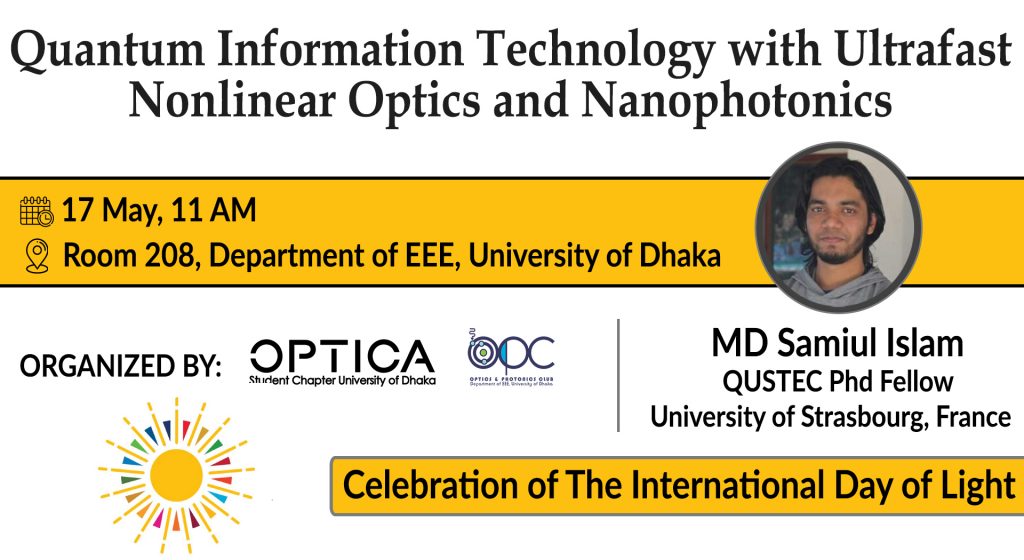Talk on

For the celebration of International Day of Light 2022, OPTICA Student Chapter University of Dhaka, collaborating with Optics and Photonics Club, Department of EEE, University of Dhaka, is proud to organize an interesting talk on Quantum information technology with ultrafast nonlinear optics and Nanophotonics. The event will be held on 17th of May, 2022 at 11:00 AM, in the Department of Electrical and Electronic Engineering, University of Dhaka, Dhaka-1000.

Meet our speaker:

